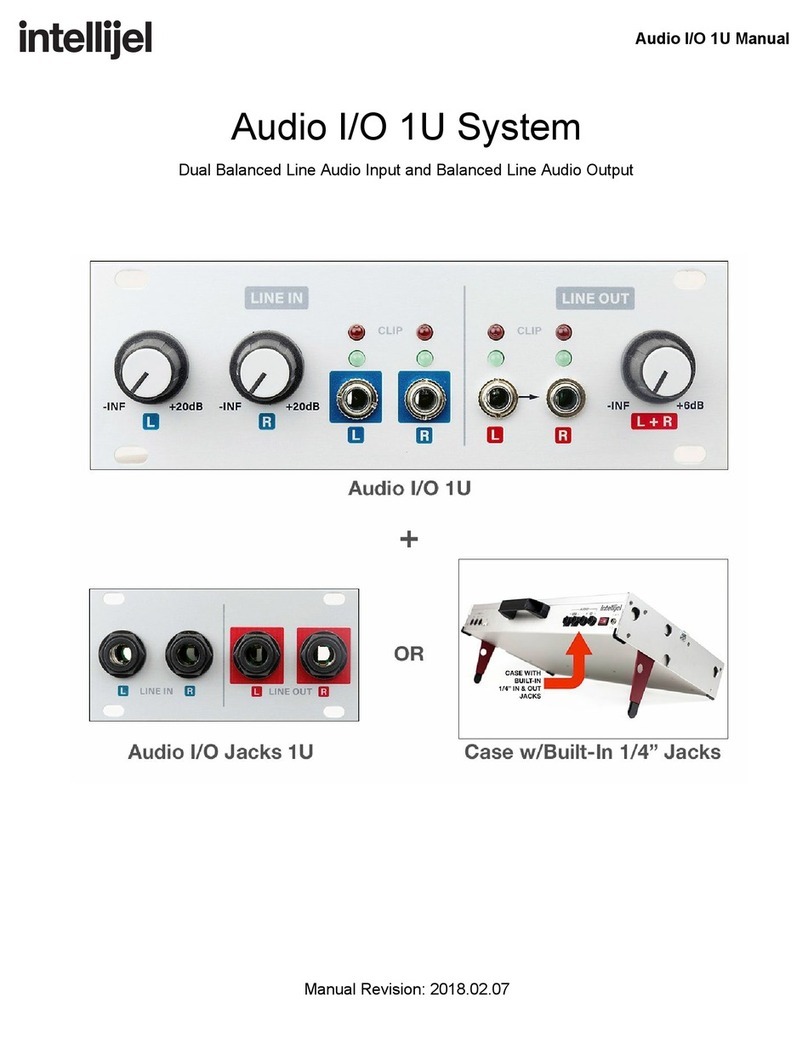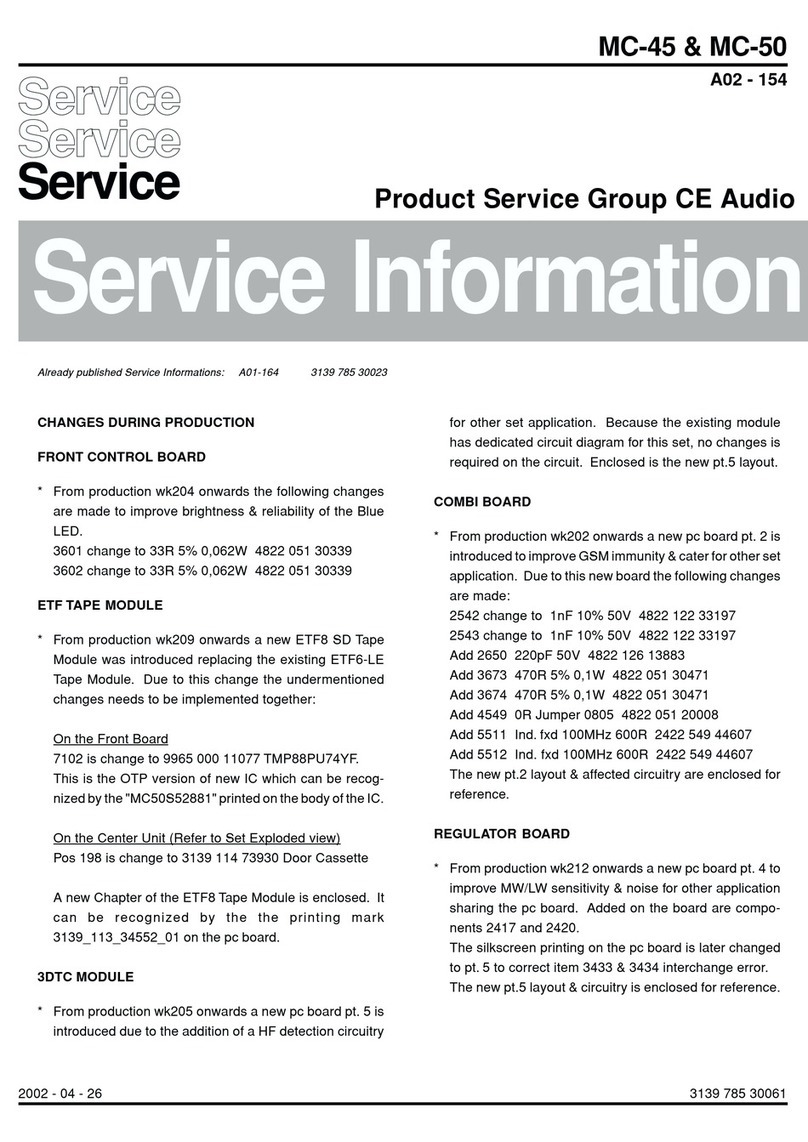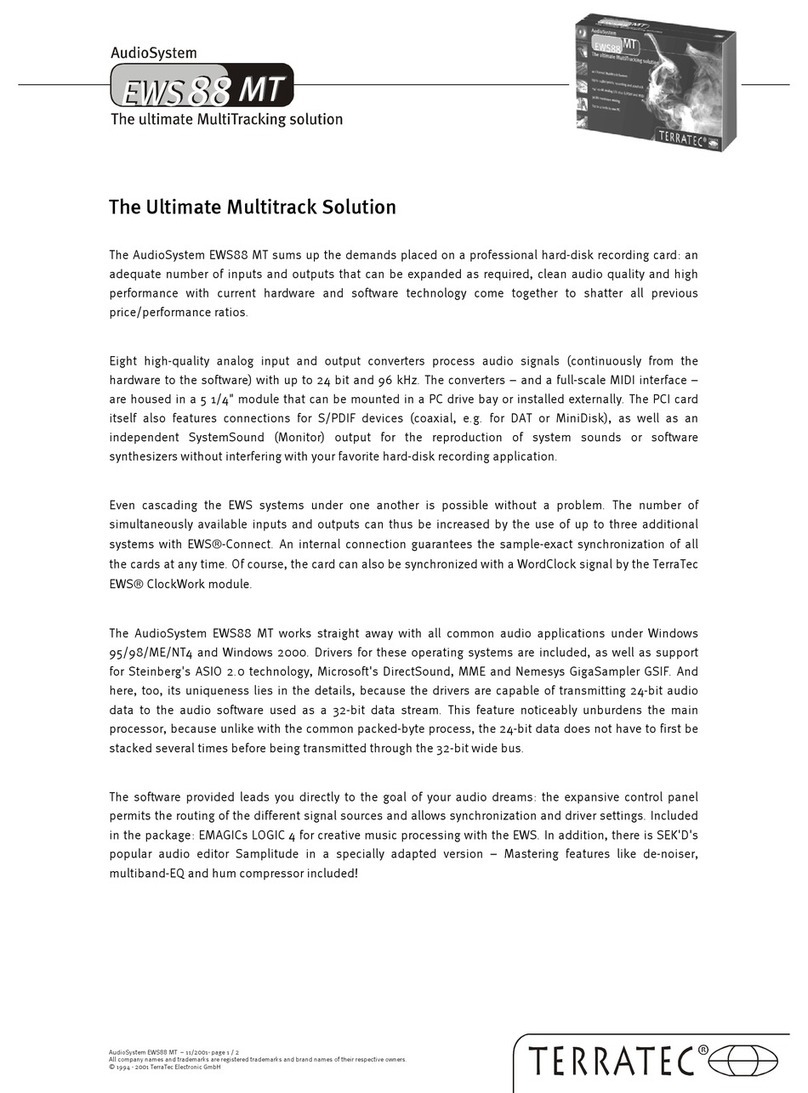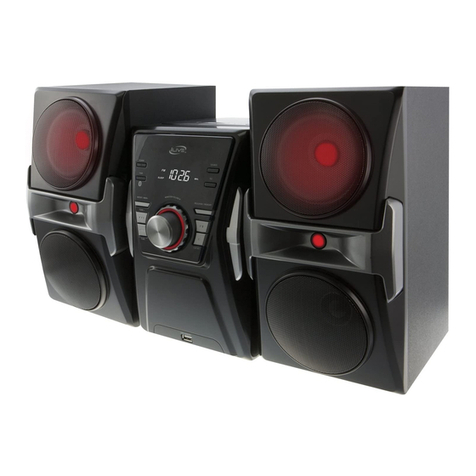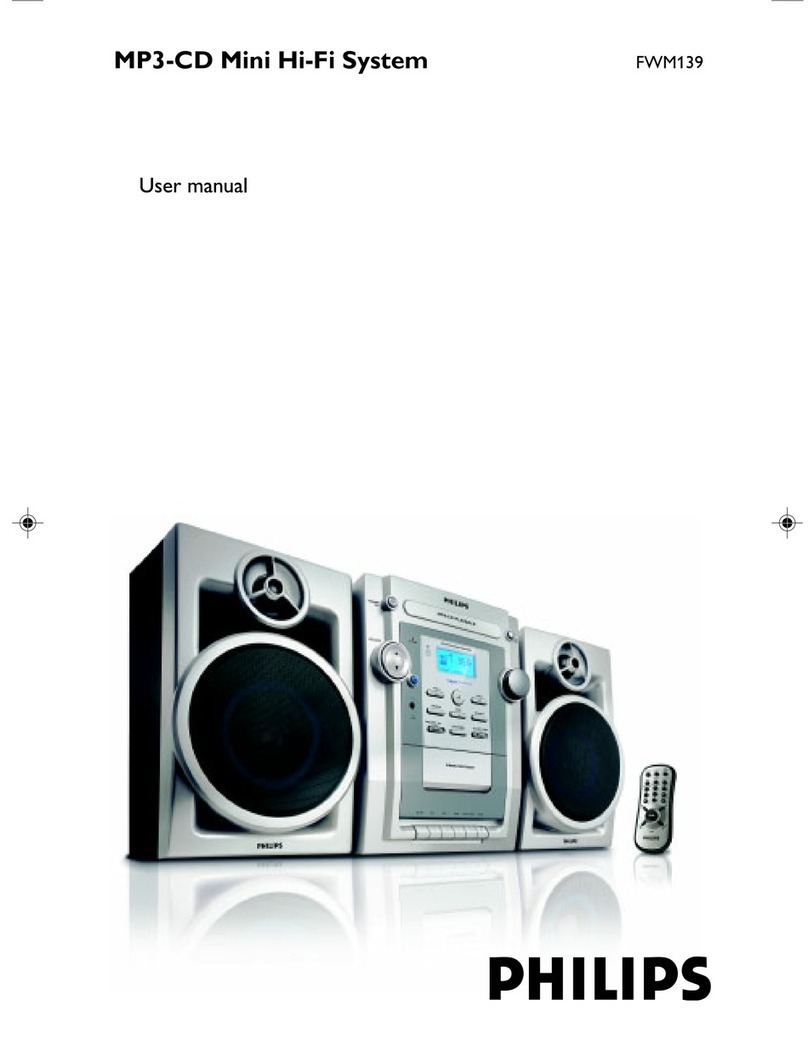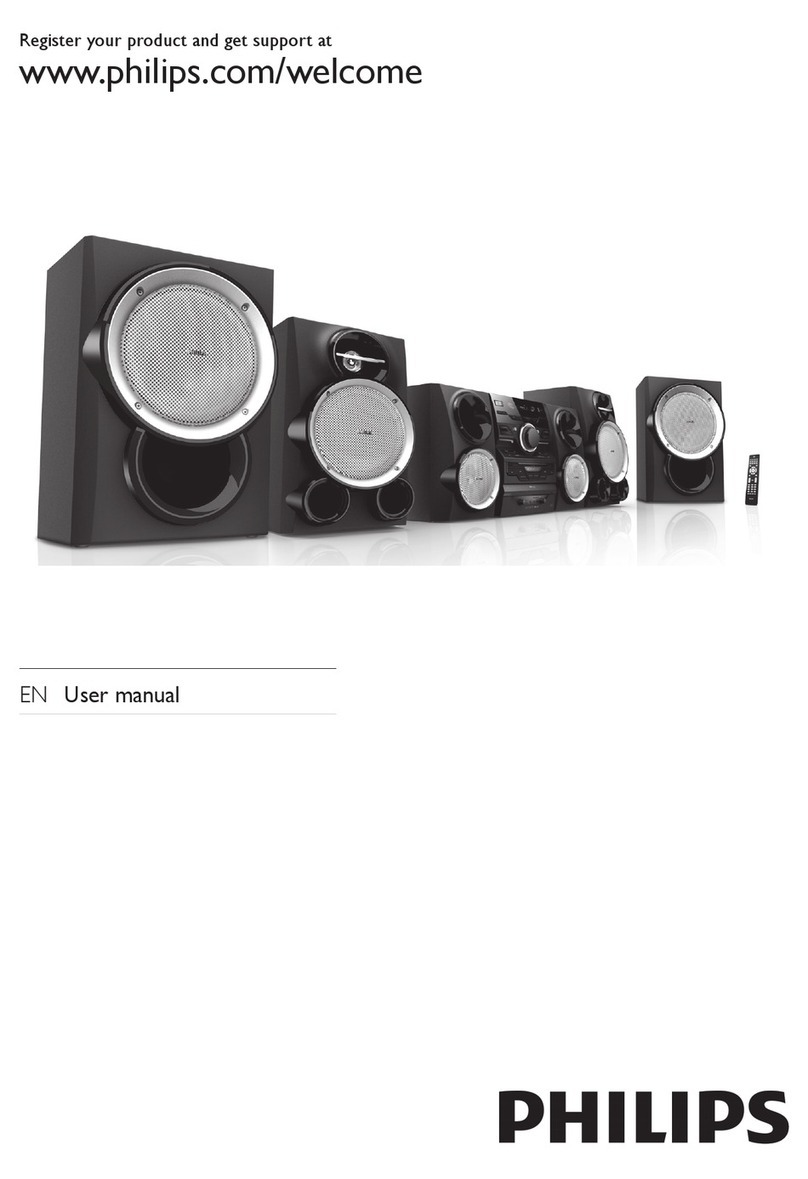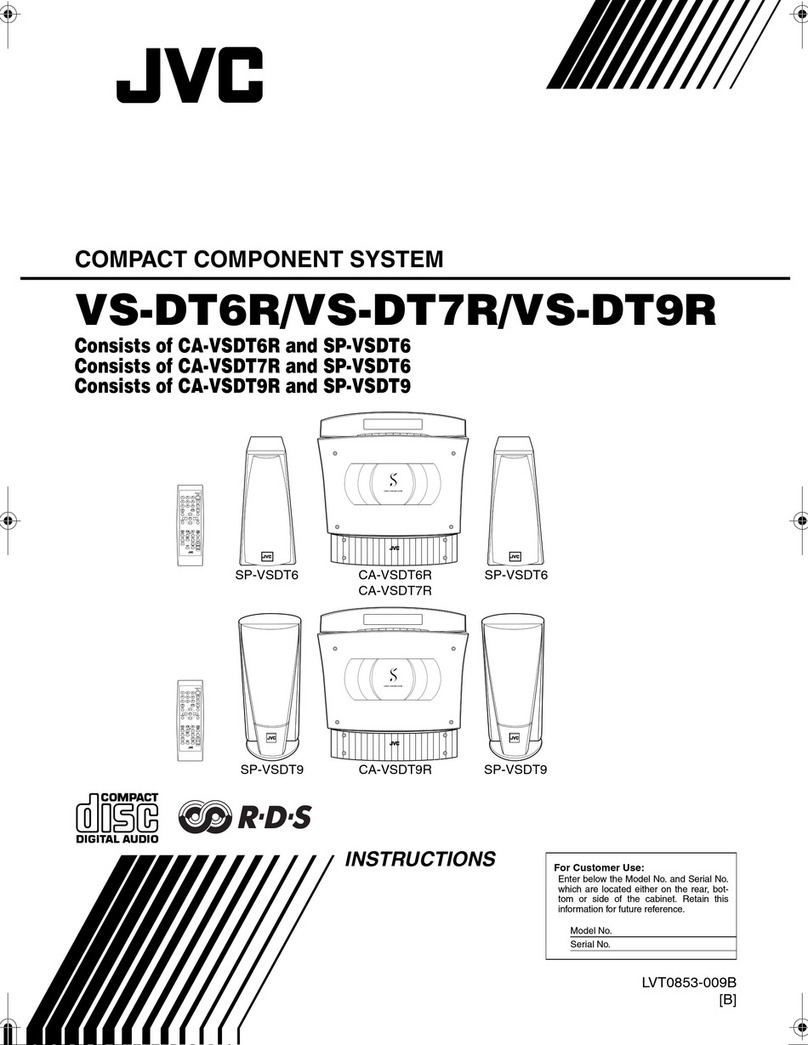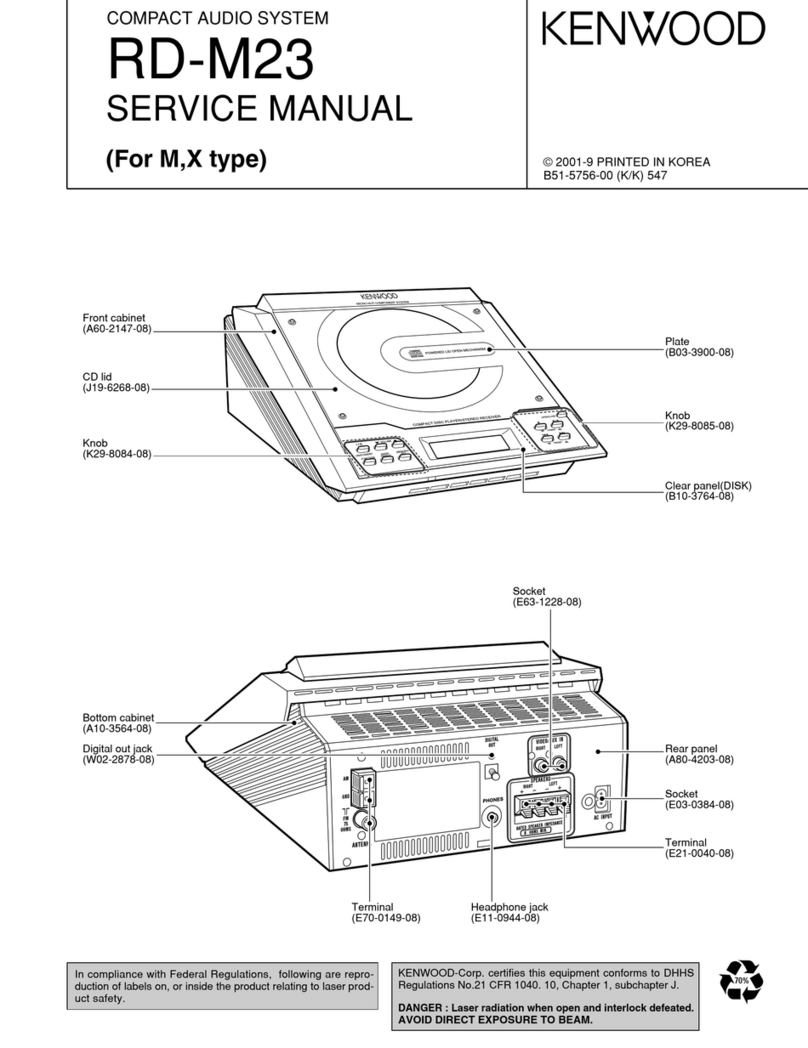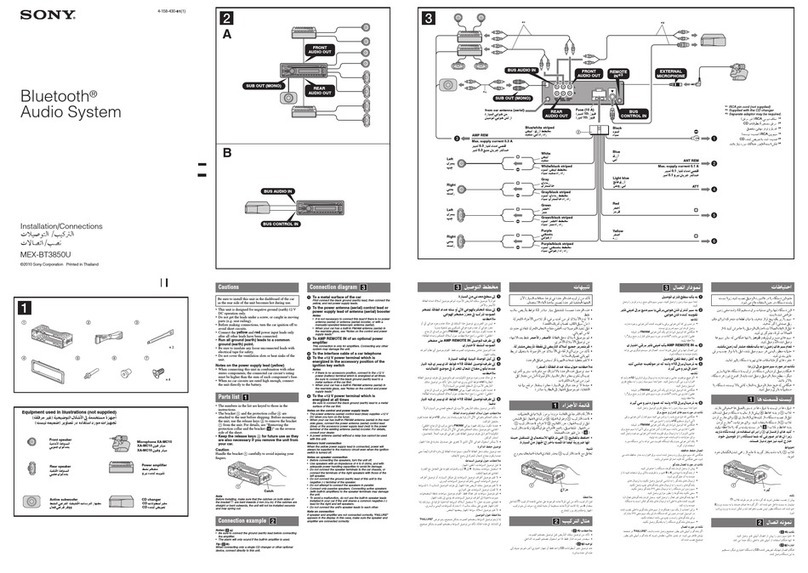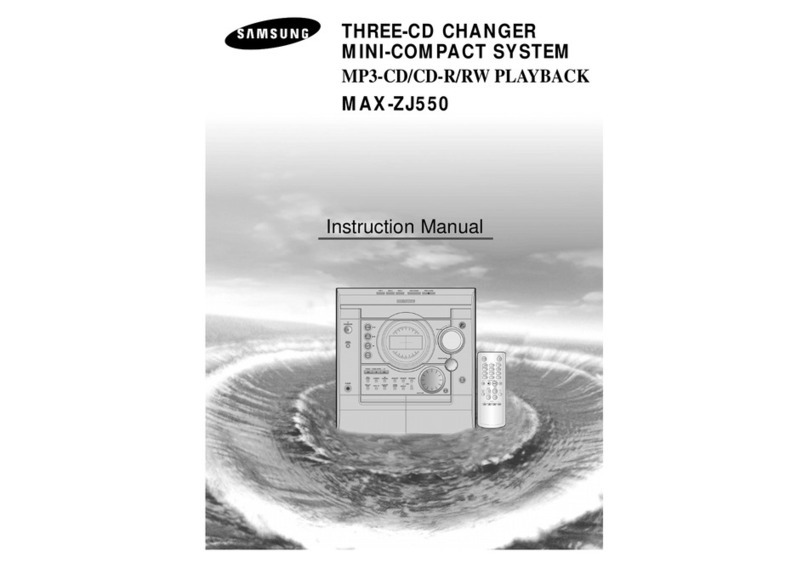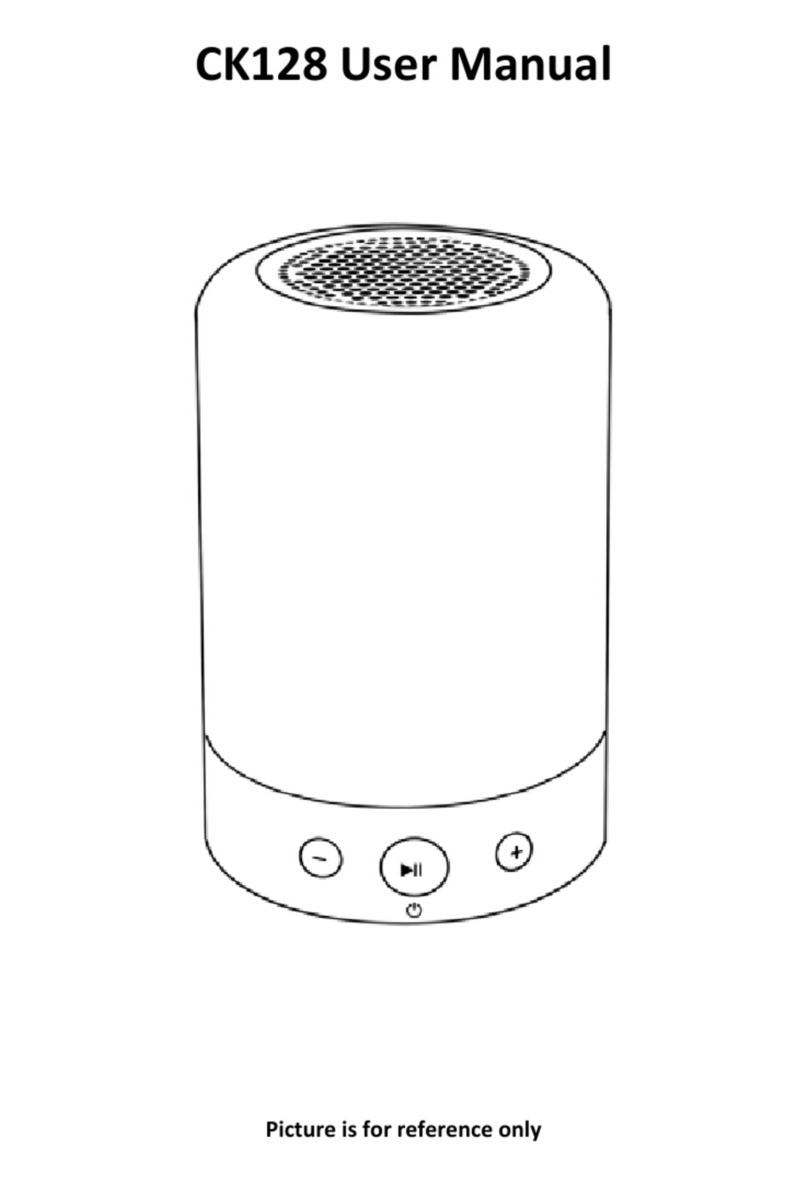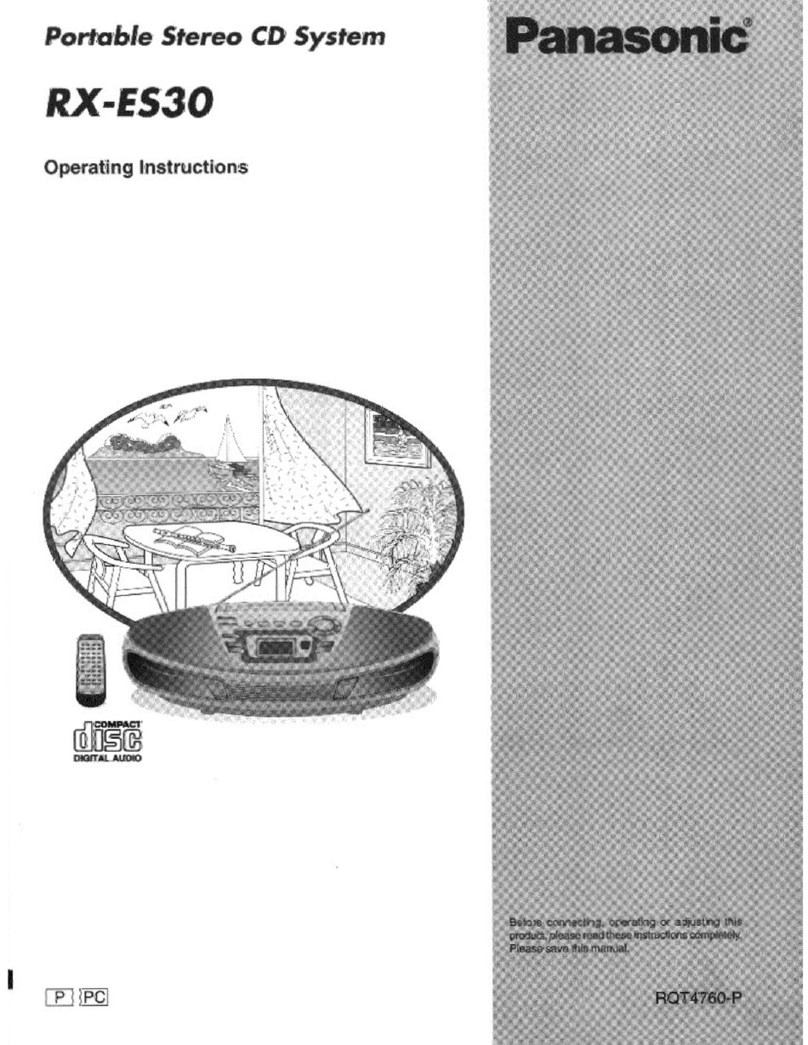Intellijel Audio I/O 1U User manual

Audio I/O 1U Manual
Audio I/O 1U System
Dual Balanced Line Audio Input and Balanced Line Audio Output
Manual Revision: 2018.09.13

Audio I/O 1U Manual
Table of Contents
Table of Contents
Compliance
Overview
Features
System
Installation
Before Your Start
Installing Your Module
Connecting To The Audio I/O Jacks 1U Module
Connecting the TRS Jacks on the 7U Case
Front Panel (Audio I/O 1U)
Controls
Inputs & Outputs
Front Panel (Audio I/O Jacks 1U)
Inputs & Outputs
Technical Specifications
Page 1

Audio I/O 1U Manual
Compliance
This device complies with Part 15 of the FCC Rules. Operation is subject to the
following two conditions: (1) this device may not cause harmful interference, and
(2) this device must accept any interference received, including interference that
may cause undesired operation.
Changes or modifications not expressly approved by Intellijel Designs, Inc. could
void the user’s authority to operate the equipment.
Any digital equipment has been tested and found to comply with the limits for a
Class A digital device, pursuant to part 15 of the FCC Rules. These limits are
designed to provide reasonable protection against harmful interference when the
equipment is operated in a commercial environment. This equipment generates,
uses, and can radiate radio frequency energy and, if not installed and used in
accordance with the instruction manual, may cause harmful interference to radio
communications.
This device meets the requirements of the following standards and directives:
EMC: 2014/30/EU
EN55032:2015 ; EN55103-2:2009 (EN55024) ; EN61000-3-2 ; EN61000-3-3
Low Voltage: 2014/35/EU
EN 60065:2002+A1:2006+A11:2008+A2:2010+A12:2011
RoHS2: 2011/65/EU
WEEE: 2012/19/EU
Page 2

Audio I/O 1U Manual
Overview
Use the Audio I/O 1U system to connect Eurorack modular-level signals to the balanced line
level (+4 dBu) signals used by professional audio gear. With this system, you can send audio to
and return audio from external FX units; patch in external line-level instruments like synths and
drum machines, output your modular audio to DAW; and much more.
The Audio I/O 1U system comprises two halves: an Audio I/O 1U module (for connecting to your
modular gear), and either an AudioI/OJacks module or a 7U case with built-in ¼” audio jacks
(for connecting to your external studio gear).
Features
● 2 x Balanced TRS 1/4″ to Eurorack modular level input paths
● 2 x Eurorack modular level signals to Balanced TRS 1/4″ output paths
● 4 x two-stage LED VU meter to monitor all inputs and outputs simultaneously
● Uses high quality THATCorp balanced line drivers and receiver ICs.
● Input path has up to 20 dB of gain which allows you to patch in low level consumer level
signals and boost them. 0 dB = 10 Vpp (nominal Eurorack level)
● Output path steps a nominal Eurorack level (10 Vpp) down to +4 dBu with up to +6 dB
gain.
● The Audio I/O1U module connects to the Audio I/O JACKS module via the included
ribbon cable. The same ribbon cable can be used to connect to the rear-mounted audio
jacks of the 7U performance cases.
Page 3

Audio I/O 1U Manual
System
A complete eurorack Audio I/O solution requires the purchase of two components:
● An Audio I/O 1U module
The Audio I/O 1U module houses
all the necessary line drivers,
VUmeters and gain control
circuitry, along with the
⅛
” jacks
required to interface with eurorack
modules. It also includes the ribbon
cable for connecting to either the
AudioI/OJacks1U module or an
Intellijel 7U case as outlined below.
● Either an Audio I/O Jacks 1U module or an Intellijel 7U Case with built-in ¼” TRS audio
jacks.
Audio I/O Jacks 1U Module
If you don’t own an Intellijel 7U
case, then you need to purchase
an Audio I/O Jacks 1U module,
which connects via ribbon cable to
the Audio I/O 1U module to
provide ¼” TRS in/out jacks for
interfacing with studio gear.
Pedal I/O 7U Case Adapter
If you own an Intellijel 7Ucase,
then you can connect the
AudioI/O1U module directly to
the case using the ribbon cable
included with the AudioI/O1U
module.
Page 4

Audio I/O 1U Manual
Installation
This module is designed for use within an
Intellijel-standard 1U row, such as
contained within the Intellijel 4U and 7U
Eurorack cases. Intellijel’s 1U specification
is derived from the Eurorack mechanical
specification set by Doepfer that is
designed to support the use of lipped rails
within industry standard rack heights.
Before Your Start
Intellijel Eurorack modules are designed to be used with a Eurorack-compatible case and power
supply. We recommend you use Intellijel cases and power supplies.
Before installing a new module in your case, you must ensure your power supply has a free
power header and sufficient available capacity to power the module:
● Sum up the specified +12V current draw for all modules, including the new one. Do the
same for the -12 V and +5V current draw. The current draw will be specified in the
manufacturer's technical specifications for each module.
● Compare each of the sums to specifications for your case’s power supply.
● Only proceed with installation if none of the values exceeds the power supply’s
specifications. Otherwise you must remove modules to free up capacity or upgrade your
power supply.
You will also need to ensure your case has enough free space (hp) to fit the new module. To
prevent screws or other debris from falling into the case and shorting any electrical contacts, not
leave gaps between adjacent modules, and cover all unused areas with blank panels. Similarly,
do not use open frames or any other enclosure that exposes the backside of any module or the
power distribution board.
Page 5

Audio I/O 1U Manual
You can use a tool like ModularGrid to assist in your planning. Failure to adequately power your
modules may result in damage to your modules or power supply. If you are unsure, please
contact us before proceeding.
Installing Your Module
When installing or removing a module from
your case always turn off the power to the
case and disconnect the power cable. Failure
to do so may result in serious injury or
equipment damage.
Ensure the 10-pin connector on the power
cable is connected correctly to the module
before proceeding. The red stripe on the
cable must line up with the -12V pins on the
module’s power connector. The pins are
indicated with the label -12V, a white stripe
next to the connector, the words “red stripe”,
or some combination of those indicators.
Most modules will come with the cable
already connected but it is good to double
check the orientation. Be aware that some modules may have headers that serve other
purposes so ensure the cable is connected to the right one.
The other end of the cable, with a 16-pin
connector, connects to the power bus
board of your Eurorack case. Ensure the
red stripe on the cable lines up with the
-12V pins on the bus board. On Intellijel
power supplies the pins are labelled with
the label “-12V” and a thick white stripe:
If you are using another manufacturer’s
power supply, check their documentation
for instructions.
Page 6

Audio I/O 1U Manual
Once connected, the cabling between the module and power supply should resemble the
picture below:
Before reconnecting power and
turning on your modular
system, double check that the
ribbon cable is fully seated on
both ends and that all the pins
are correctly aligned. If the pins
are misaligned in any direction
or the ribbon is backwards you
can cause damage to your
module, power supply, or other
modules.
After you have confirmed all the
connections, you can reconnect
the power cable and turn on
your modular system. You should immediately check that all your modules have powered on
and are functioning correctly. If you notice any anomalies, turn your system off right away and
check your cabling again for mistakes.
Page 7

Audio I/O 1U Manual
Connecting To The Audio I/O Jacks 1U Module
The main AudioI/O1U module ships with a ribbon cable for connecting to a set of ¼” TRS
audio jacks — either those built-in to the Intellijel 7U case or those contained within the
separately available AudioI/OJacks1U module. To connect the AudioI/O1U module to an
AudioI/OJacks1U module:
1. Make note of the small triangle
icon pointing to a pin on each
circuit board.
2. Plug one end of the ribbon
cable into the Audio I/O1U
module such that the red stripe
aligns with the pair of pins
indicated by the triangle.
3. Plug the other end into the AudioI/OJacks1U module, again making sure to align the
red strip with the pair of pins indicated by the triangle.
IMPORTANT: Do not connect this jack to a power supply.
Page 8

Audio I/O 1U Manual
Connecting the TRS Jacks on the 7U Case
The main AudioI/O1U module ships with a ribbon cable for connecting to a set of ¼” TRS
audio jacks — either those built-in to the Intellijel 7U case or those contained within the
separately available AudioI/OJacks1U module. To connect the AudioI/O1U module to an
Intellijel7U case:
4. Make note of the small
triangle icon pointing to a
pin on each circuit board.
5. Plug one end of the ribbon
cable into the Audio I/O1U
module such that the red
stripe aligns with the pair of
pins indicated by the
triangle.
6. Plug the other end into the audio jacks circuit board that’s mounted inside the 7U case
and contains the ¼” jacks, again making sure to align the red strip with the pair of pins
indicated by the triangle.
IMPORTANT: Do not connect this jack to a power supply.
NOTE: Do not try to connect the AudioI/O 1U to the MIDI circuit board, which is
located at the opposite end of the 7U case.
Page 9

Audio I/O 1U Manual
Front Panel (Audio I/O 1U)
Controls
A. LINE IN GAIN (L) knob - Adjusts the level of the signal coming into the modular via
either the 7U Case’s left ¼” input jack or the AudioI/OJack1U module’s left ¼” input
jack.
This knob has up to 20 dB of gain, which allows you to patch in low consumer level
signals and boost them. 0 dB = 10V p-p (nominal Eurorack level).
B. LINE IN GAIN (R) knob - Adjusts the level of the signal coming into the modular via
either the 7U Case’s right ¼” input jack or the AudioI/OJack1U module’s right ¼” input
jack.
This knob has up to 20 dB of gain, which allows you to patch in low consumer level
signals and boost them. 0 dB = 10Vp-p (nominal Eurorack level).
C. LINE OUT GAIN (L+R) knob - Adjusts the level of the signal going out of the modular
via either the 7U Case’s left/right ¼” output jacks or the AudioI/OJack1U module’s
left/right ¼” output jack.
This knob steps a nominal Eurorack level (10Vp-p) down to +4 dBu (with the knob
roughly at 12:00), but allows for up to +6 dB of gain.
D. INPUT VU LEDs - This pair of LEDs monitors the signal level coming into the modular
from an external source. The green LED lights around 300mV rms, and indicates the
presence of a healthy signal. The red LED indicates that the signal is clipping the input
and comes on at 9V peak (6.2V rms) with a 1kHz sine). If the red light comes on, you
need to back off on your input levels.
Page 10

Audio I/O 1U Manual
E. OUTPUT VU LEDs - This pair of LEDs monitors the signal level going out of your
modular. The green LED lights around 600mV rms (with a 1kHz sine), which indicates a
decent signal level is present. Red indicates that the signal is clipping the output and
comes out when the output is 6.2V rms. If the red light comes on, you need to back off
on your levels.
Inputs & Outputs
1. LINE IN (L) - The audio present at this jack is a eurorack-compatible (0 dB = 10V p-p)
version of the audio signal coming into the modular via either the 7U Case’s left ¼” input
jack or the AudioI/OJacks1U’s left ¼” input jack. The actual level present at this jack is
set by the corresponding LINE IN GAIN (L) knob, and you can monitor this level with the
INPUT VU LEDs immediately above it. This jack enables you to route external audio
signals to various eurorack modules for processing.
2. LINE IN (R) - The audio present at this jack is a eurorack-compatible (0 dB = 10V p-p)
version of the audio signal coming into the modular via either the 7U Case’s right ¼”
input jack or the AudioI/OJacks1U’s right ¼” input jack. The actual level present at this
jack is set by the corresponding LINE IN GAIN (R) knob, and you can monitor this level
with the INPUT VU LEDs immediately above it. This jack enables you to route external
audio signals to various eurorack modules for processing.
3. LINE OUT (L) - Any eurorack-level audio sent to this jack will be scaled down to
professional studio-standard +4 dBu levels and sent out of your modular via either the
7U Case’s left ¼” output jack or the AudioI/OJacks1U module’s left ¼” output jack.
This enables you to send eurorack audio directly into your mixer, DAW, or external
effects. You can adjust this level using the LINE OUT GAIN (L+R) knob, and you can
monitor the LEFT channel output level with the 2-stage OUTPUT VU LEDs immediately
above this jack.
NOTE: The LINE OUT (L) jack is normalled to the LINE OUT (R) jack, so if nothing is
connected to the LINE OUT (R), then one signal will feed both of the ¼” output jacks
(either from the 7U Case, or from the AudioI/OJacks1U module, whichever you’ve
connected).
4. LINE OUT (R) - Any eurorack-level audio sent to this jack will be scaled down to
professional studio-standard +4 dBu levels and sent out of your modular via either the
7U Case’s right ¼” output jack or the AudioI/OJacks1U module’s right ¼” output jack.
This enables you to send eurorack audio directly into your mixer, DAW, or external
effects. You can adjust this level using the LINE OUT GAIN (L+R) knob, and you can
monitor the RIGHT channel output level with the 2-stage OUTPUT VU LEDs
immediately above this jack.
Page 11

Audio I/O 1U Manual
Front Panel (Audio I/O Jacks 1U)
Inputs & Outputs
1. LINE IN (L) - Connect the output of any external pro-level audio source to this ¼” TRS
jack for processing within your eurorack modular. The signal present here will be
amplified to eurorack levels by the AudioI/O1U module and made available at that
module’s LINE IN (L)
⅛
” jack.
NOTE: This is a balanced ¼” TRS jack, but the AudioI/O1U circuitry readily supports
the use of unbalanced TS cables, and it can boost instrument- and consumer-level
signals to eurorack levels.
2. LINE IN (R) - Connect the output of any external pro-level audio source to this ¼” TRS
jack for processing within your eurorack modular. The signal present here will be
amplified to eurorack levels by the AudioI/O1U module and made available at that
module’s LINE IN (R)
⅛
” jack.
NOTE: This is a balanced ¼” TRS jack, but the AudioI/O1U circuitry readily supports
the use of unbalanced TS cables, and it can boost instrument- and consumer-level
signals to eurorack levels.
3. LINE OUT (L) - The scaled output of your AudioI/O1U’s LINE OUT (L)
⅛
” jack appears
at this ¼” TRS jack for mixing with other studio-level gear or for recording in your DAW.
This output supports both professional, balanced +4 dBu equipment and consumer,
unbalanced -10dbV level gear.
4. LINE OUT (R) - The scaled output of your AudioI/O1U’s LINE OUT (R)
⅛
” jack appears
at this ¼” TRS jack for mixing with other studio-level gear or for recording in your DAW.
This output supports both professional, balanced +4 dBu equipment and consumer,
unbalanced -10dbV level gear.
Page 12

Audio I/O 1U Manual
Technical Specifications
Audio I/O Width
Audio I/O Jacks Width
24 hp
16 hp
Audio I/O Maximum Depth
Audio I/O Jacks Maximum Depth
36 mm
38 mm
Audio I/O Current Draw
Audio I/O Jacks Current Draw
39 mA @ +12V | 28 mA @ -12V
0 mA (passive module)
Page 13
Other manuals for Audio I/O 1U
1
Table of contents
Other Intellijel Stereo System manuals
